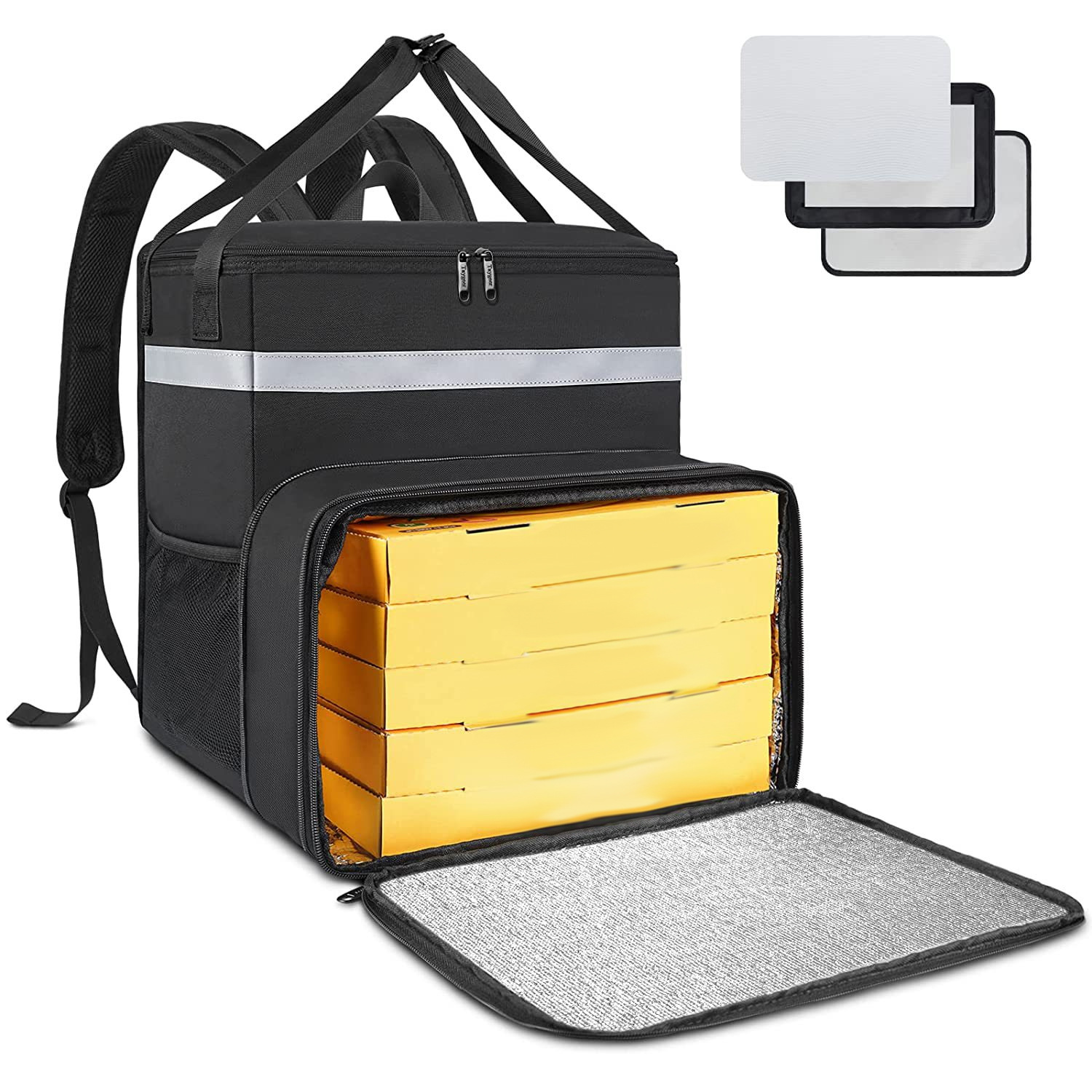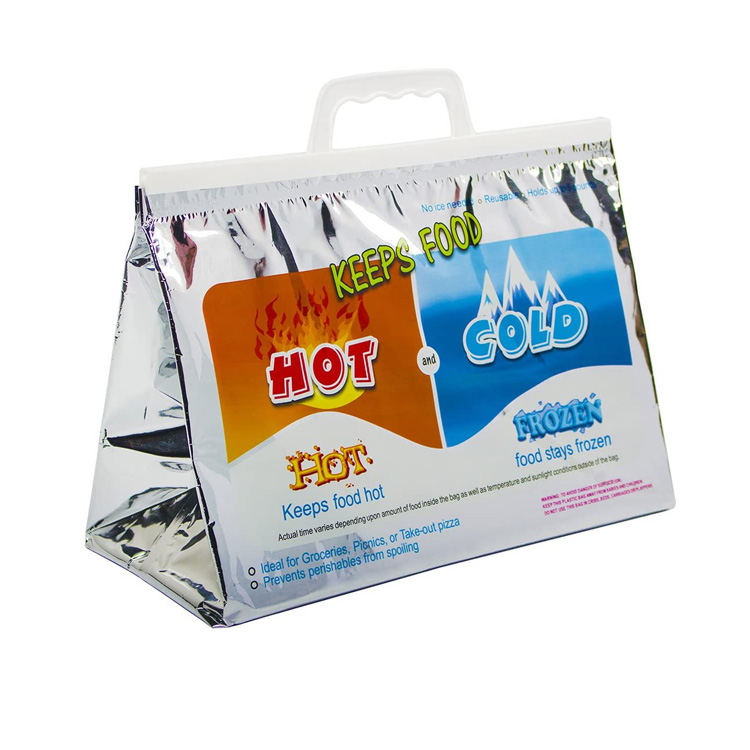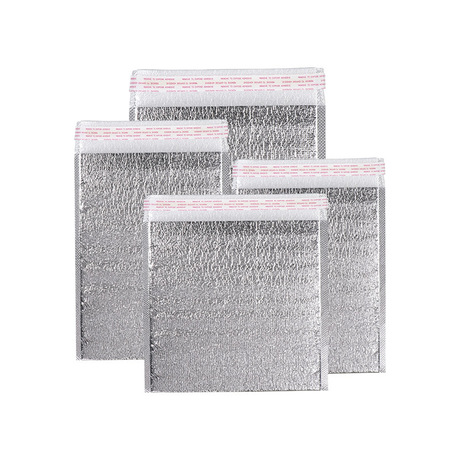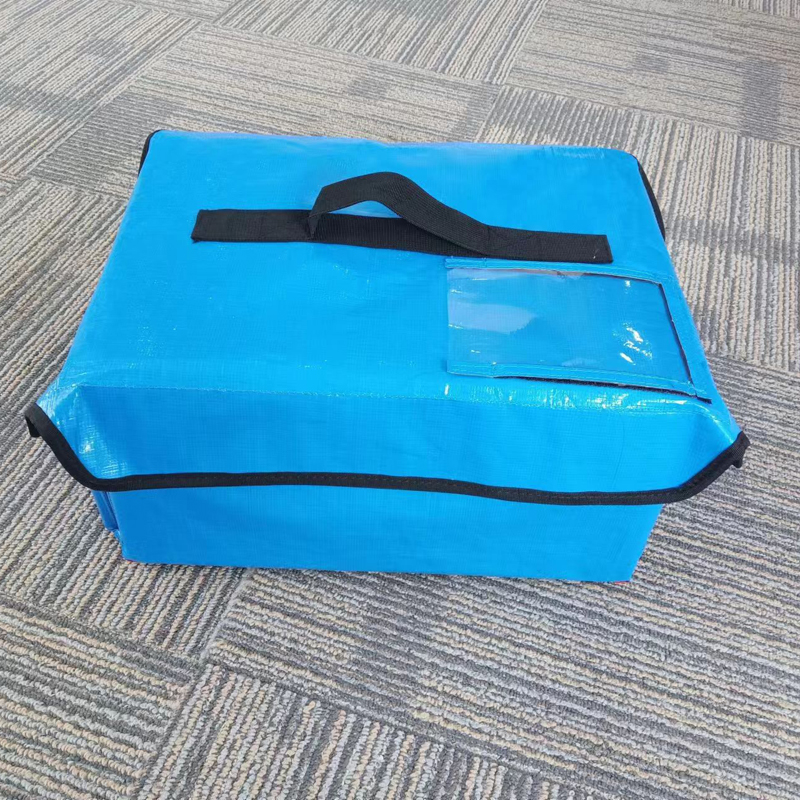1.Definition von Gel -Eisbeutel
Gel-Eisbeutel sind eine Art biologisch synthetisierter Hochenergie-Speichereis, Eine verbesserte Version von gewöhnlichen Eisbeuteln. Im Vergleich zu normalen Eisbeuteln, Sie haben eine erhöhte Kühlkapazität und füllen gleichmäßiger Kälte frei, effektiv die Kühldauer erweitern. In ihrem normalen Zustand, Gel -Eisbeutel sind transparente Gelblöcke, die Gelee ähneln. Während des Einfrierergie -Energiespeicherprozesses, Sie verformen oder wölbten sich nicht leicht, gute Regelmäßigkeit aufrechterhalten. Es besteht kein Risiko, Lowperatur-Gegenstände auszukommen und zu kontaminieren. Auch wenn die Verpackung vollständig beschädigt ist, Das Gel bleibt in seinem Gelee-ähnlichen Zustand, nicht fließend oder undicht, und wird nicht niedrige Temperaturen Pharmazeutika einnehmen.
2.Nutzungsszenarien und Einfrieren von Gel -Eisbeutel
Die Nutzungsmethode der Geleispacks ist die gleiche wie die von gewöhnlichen Eisbeuteln. Erste, Legen Sie das Geleisbeutel in eine Umgebung mit niedriger Temperatur, um es vollständig einzufrieren. Dann, Nehmen Sie den Geleisbock. (Notiz: Der Eisbeutel selbst ist nicht kalt und muss eingefroren werden, bevor es effektiv sein kann, um die Dinge kühl zu halten!)
2.1 So frieren Sie Gel -Eisbeutel für den Heimgebrauch ein
Für den Heimgebrauch, Sie können den Geleispack flach in den Gefrierfach eines Kühlschranks platzieren. Frieren Sie es für mehr als gründlich ein 12 Stunden, bis es völlig solide wird (Bei der Hand gedrückt, Der Eisbeutel sollte nicht verformen). Nur dann kann es für die Kaltkettenverpackung und den Transport von Lebensmitteln oder Arzneimitteln verwendet werden.
2.2 So frieren Sie Gel -Eisbeutel an Verbreitungspunkten ein
Für die Verwendung an Verteilungspunkten, Gel -Eisbeutel können eingefroren werden, indem ganze Kisten in einen horizontalen Gefrierschrank gelegt werden. Sie müssen für mehr als gründlich eingefroren werden 14 Tage, bis sie völlig solide werden (Bei der Hand gedrückt, Der Eisbeutel sollte nicht verformen). Nur dann können sie für die Kaltkette Verpackung und den Transport von Lebensmitteln oder Arzneimitteln verwendet werden.
Um den Gefrierprozess zu beschleunigen, Sie können die gefrorene Menge reduzieren und die Gel -Eisbeutel flach in den Gefrierschrank legen. Einfrieren sie für mehr als gründlich ein 12 Stunden, bis sie völlig solide werden (Bei der Hand gedrückt, Der Eisbeutel sollte nicht verformen). Alternativ, Gel -Eisbeutel können in spezielle Gefrierregal für Eisbeutel und Eisboxen übertragen werden, im Gefrierschrank platziert, und für mehr als gründlich eingefroren 10 Stunden, bis sie völlig solide werden (Bei der Hand gedrückt, Der Eisbeutel sollte nicht verformen).
2.3 So frieren Sie Eisbeutel an Terminallagern ein
Für die Verwendung in großen Terminallagern, Gel -Eisbeutel können in perforierten Pappkartons verpackt und auf Paletten zum Einfrieren in einem Kühlraum mit einer Temperatur unter -10 ° C gelegt werden. Diese Methode stellt sicher, dass die Gel -Eisbeutel vollständig eingefroren sind 25 Zu 30 Tage. Alternativ, Perforierte Plastikumsatzkästen können zum Verpacken der Geleisbeutel verwendet werden, und auf Paletten im Kühlraum mit einer Temperatur unter -10 ° C platziert. Diese Methode stellt sicher, dass die Gel -Eisbeutel vollständig eingefroren sind 17 Zu 22 Tage.
Zusätzlich, Mit einem Schnellfrierraum mit niedrigem Temperatur können Gel-Eisbeutel gefrieren. Diese Räume haben niedrigere Temperaturen und eine höhere Kühlkapazität, Typischerweise zwischen -35 ° C und -28 ° C. In einem Tief-Temperatur-Schnell-Frost-Raum, Gel -Eisbeutel in perforierten Kartonkästen können vollständig eingefroren werden 7 Tage, und diejenigen, die in perforierten Plastikumsatzkästen verpackt sind 5 Tage.
Shanghai Huizhou Industrial Co., Ltd. hat diese Gefriermethoden optimiert und signifikante Ergebnisse erzielt: In einem Kühlraum mit einer Temperatur unter -10 ° C, Gel -Eisbeutel in perforierten Kartonkästen können vollständig eingefroren werden 4 Tage, und diejenigen, die in perforierten Plastikumsatzkästen verpackt sind 3 Tage. In einem Tiefsttemperatur -Schnellfrierraum mit Temperaturen zwischen -35 ° C und -28 ° C, Gel -Eisbeutel in perforierten Kartonkästen können vollständig eingefroren werden 16 Std., und diejenigen, die in perforierten Plastikumsatzkästen verpackt sind 14 Std..
3.Typen und anwendbare Szenarien von Huizhous Gel -Eisbeutel
Shanghai Huizhou Industrial Co., Ltd. ist ein High-Tech-Unternehmen in der Kaltkettenindustrie, am April gegründet 19, 2011. Das Unternehmen widmet sich der Bereitstellung professioneller Kaltketten -Temperatursteuerungslösungen für Lebensmittel und frische Produkte (frisches Obst und Gemüse, Rindfleisch, Lamm, Geflügel, Meeresfrüchte, Tiefkühlkost, Backwaren, gekühlte Milchprodukte) und Kunden mit pharmazeutischer Kaltkette (Biopharmazeutika, Blutprodukte, Impfungen, Biologische Proben, In -vitro -diagnostische Reagenzien, Tiergesundheit). Unsere Produkte umfassen Isolierungsprodukte (Schaumkästen, Isolationsboxen, Isolierbeutel) und Kältemittel (Eisbeutel, Eisboxen).
Wir produzieren eine breite Palette von Gel -Eisbeutel:
Nach Gewicht:
- 65G Gel -Eisbeutel
- 100g Gel -Eisbeutel
- 200g -Gel -Eisbeutel
- 250 g Gel -Eisbeutel
- 500 g Gel -Eisbeutel
- 650g Gel -Eisbeutel
Durch Material:
- PE/PET -Verbundfilm
- PA/PA -Verbundfilm
- - 30% PCR -Verbundfilm
-PE/PET/Nicht gewebter Stoff-Verbundfilm
-PE/PA/Nicht gewebter Stoff-Verbundfilm
Gel -Eisbeutel mit PE/PET -Verbundfilm und PE/PA -Verbundfilm werden hauptsächlich für den Transport von Kaltketten von Tiergesundheitsimpfstoffen verwendet. Der 30% PCR -Verbundfilm wird hauptsächlich in Länder wie das Vereinigte Königreich exportiert. Gel-Eisbeutel aus PE/PET/Nicht gewebter Stoff und PE/PA/Nicht gewebter Stoff werden hauptsächlich für den Transport von Litschi- und pharmazeutischen Impfstoffen verwendet.
Durch Verpackungsform:
- Rückensiegel
-Drei-Seiten-Siegel
-Vier-Seiten-Siegel
-M-förmige Taschen
Nach Phasenänderungspunkt:
--12 ° C Gel -Eisbeutel
--5 ° C Gel -Eisbeutel
- 0 ° C Gel -Eisbeutel
- 5 ° C Gel -Eisbeutel
- 10 ° C -Gel -Eisbeutel
- 18 ° C Gel -Eisbeutel
- 22 ° C -Gel -Eisbeutel
- 27 ° C Gel -Eisbeutel
Die Eisbeutel -12 ° C und -5 ° C werden hauptsächlich für den Transport von Kaltketten von gefrorenen Lebensmitteln und Arzneimitteln verwendet. Die Eisbeutel mit 0 ° C werden hauptsächlich für den Transport von Kühlketten von gekühltem Obst und Gemüse verwendet. Die 5 ° C., 10°C, 18°C, 22°C, und 27 ° C -Gel -Eisbeutel werden hauptsächlich für den Transport der Kaltkette von Arzneimitteln verwendet.






























